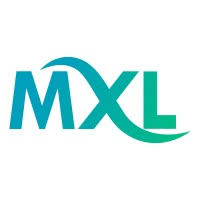
Robinjasper1109
Uploaded on Jul 25, 2025
Designing Microlearning for Maximum Accuracy and Impact | MaxLearn In the dynamic and often high-stakes environment of modern business, the quality of employee training is paramount. It's not enough for learning to be efficient or engaging; in many industries, absolute accuracy of information is non-negotiable, directly impacting compliance, safety, and operational excellence. This is particularly true for sectors facing stringent regulations or dealing with critical processes. This is where microlearning, meticulously designed for both maximum accuracy and profound impact, emerges as an indispensable strategic tool. At its core, microlearning involves breaking down complex knowledge into highly focused, bite-sized units—often called "snippets"—each crafted to achieve a single, precise learning objective. These concise modules, typically consumable in just a few minutes, are delivered via a sophisticated Microlearning Platform, ensuring immediate accessibility and practical application. When accuracy is prioritized from the design phase, microlearning minimizes errors, builds unwavering confidence, and ensures knowledge translates into reliable, impactful performance. Here are the foundational principles for designing microlearning that guarantees both maximum accuracy and significant impact: 1. Subject Matter Expert (SME) Vetting and Verification The first, and arguably most crucial, step in ensuring accuracy is involving Subject Matter Experts (SMEs) at every stage of the design process, especially content creation and review. Every data point, every procedure, and every statement within a microlearning snippet must be rigorously vetted by an expert who possesses up-to-date, authoritative knowledge. For instance, in the Pharma industry, every microlearning snippet detailing drug administration or quality control procedures must be reviewed and signed off by a qualified pharmacologist or regulatory expert. In Banking, any module on new financial regulations or fraud detection protocols requires meticulous verification by legal and compliance teams. This direct input from SMEs minimizes the risk of misinformation, ensuring content is precise from the outset. 2. Hyper-Specificity and Granularity of Information Accuracy thrives on precision. Microlearning's inherent design principle of "one objective per snippet" naturally lends itself to this. Each snippet should deliver only the exact information needed for a specific task or concept, eliminating ambiguity and extraneous details that could lead to misinterpretation. Consider a Health care setting: instead of a broad module on "patient intake," a highly accurate snippet would focus on "the precise steps for verifying patient identity for surgical consent." In Oil and Gas, a module wouldn't be on "equipment maintenance," but on "the exact torque specifications for Bolt X on Pump Y, series Z." This granular focus ensures that learners receive only validated, relevant data. 3. Clear, Unambiguous Language and Visuals To achieve maximum accuracy and impact, the language used in microlearning must be unequivocally clear, concise, and free of jargon where possible. Technical terms should be explained simply if they are critical. Visuals—images, diagrams, videos—must also be precise and professionally produced, leaving no room for misinterpretation. For a Mining safety snippet, a video demonstrating an emergency procedure must clearly show every step without any visual clutter or ambiguity. In Insurance, a diagram explaining a complex policy clause should be intuitively understandable, preventing misinterpretation by agents during client interactions. Poor visuals or vague language can undermine even the most accurate content. 4. Leverage Technology for Rapid Updates and Intelligent Validation Maintaining accuracy in a rapidly changing world requires agile systems. A sophisticated microlearning platform should facilitate quick content updates. When a regulation changes or a new procedure is introduced, the platform must allow for immediate revisions and deployment of new microlearning courses or snippets. Furthermore, an AI-powered authoring tool can play a crucial role in enhancing accuracy. Such tools can be trained on validated data sources and flag potential inconsistencies or outdated information during the content creation phase, acting as an initial layer of quality control. An AI-Powered Learning Platform can also track real-time application data, identifying areas where learners might be making errors, which can then trigger targeted, corrective microlearning. For Retail companies, this means quickly updating product information across thousands of associate devices as new models launch. 5. Rigorous Testing and Feedback Loops Before deployment, all microlearning content must undergo rigorous testing for both accuracy and impact. This includes technical testing (does it work on all devices?) and, crucially, user testing. Have a small group of target learners review the content for clarity, accuracy, and ease of understanding. Incorporate their feedback. After deployment, maintain continuous feedback loops. Utilize the analytics capabilities of your Microlearning Software and Microlearning LMS (Learning Management System) to track not just completion, but also performance metrics directly related to the content's accuracy. Are errors in compliance decreasing? Is task completion more precise? For a Banking institution, this means tracking reduced errors in loan application processing after microlearning on new data entry standards. In all industries, the ability to iterate based on real-world impact is key to perfecting accuracy over time. By embedding these principles into the design process from the very beginning, organizations can create microlearning programs that are not only efficient and engaging but also meticulously accurate. This commitment to precision ensures that employees across Finance, Retail, Banking, Mining, Health care, Oil and Gas, Pharma, and Insurance receive reliable, impactful knowledge, leading to enhanced performance, reduced risks, and sustained operational excellence.

Comments